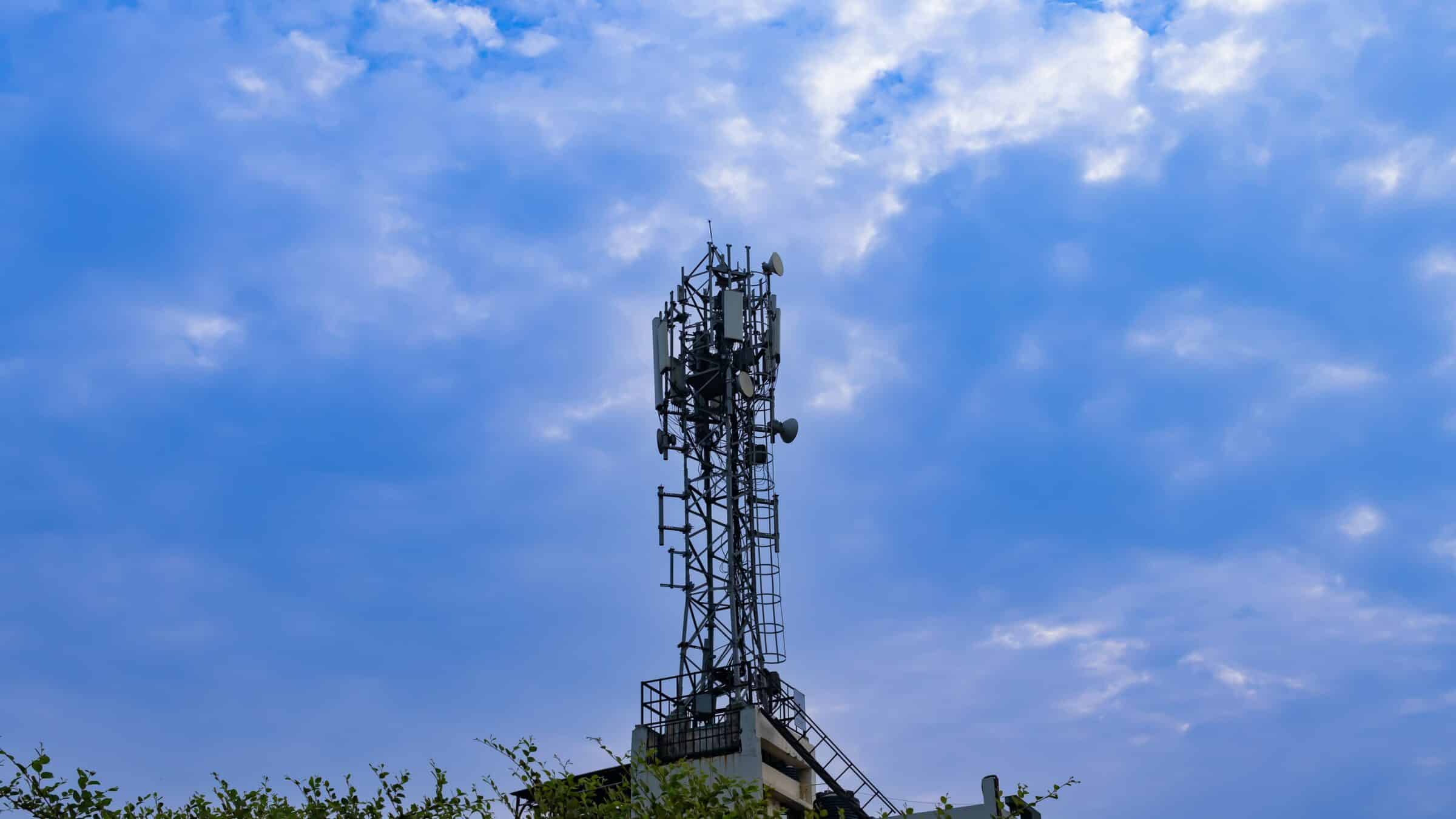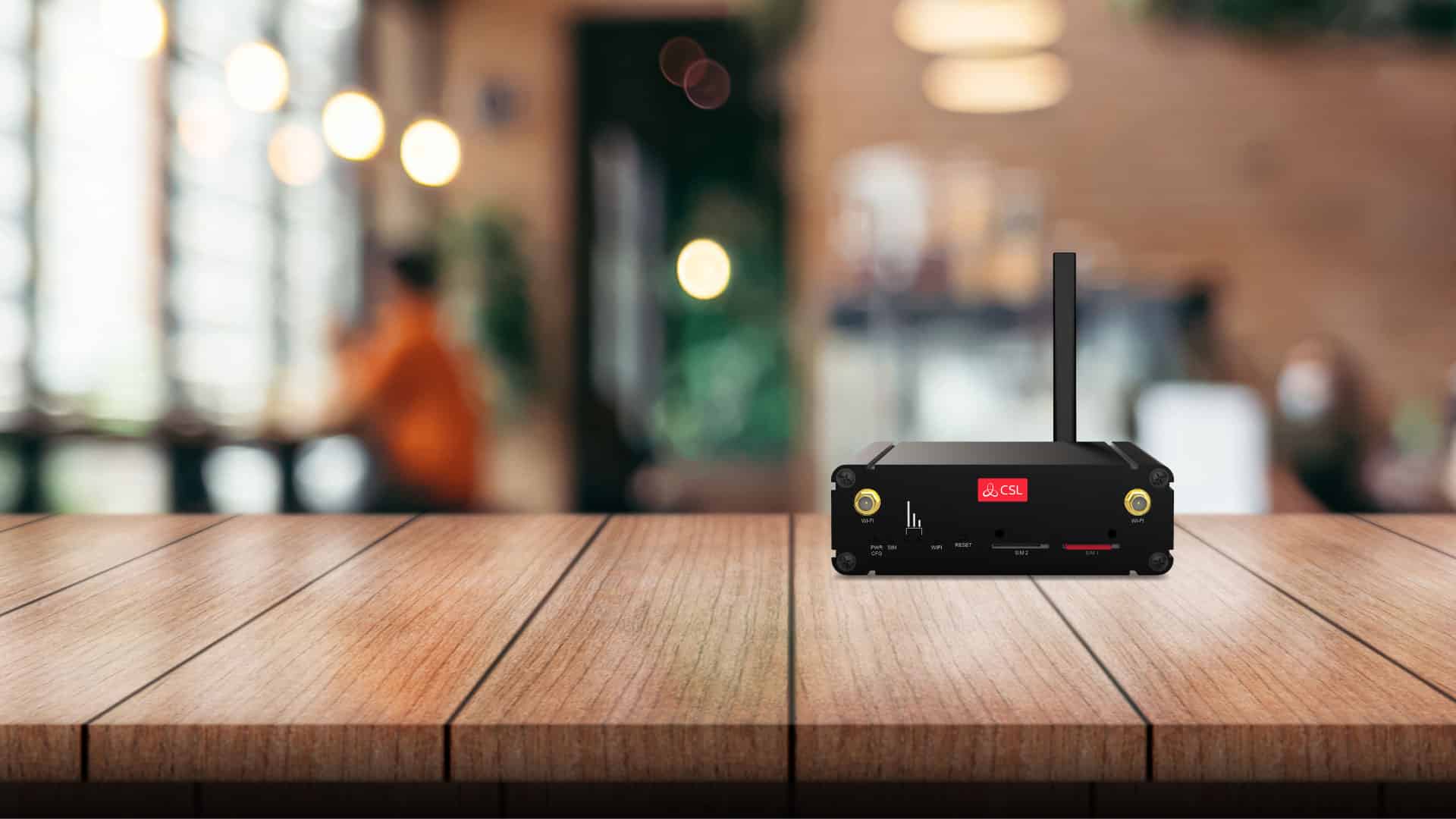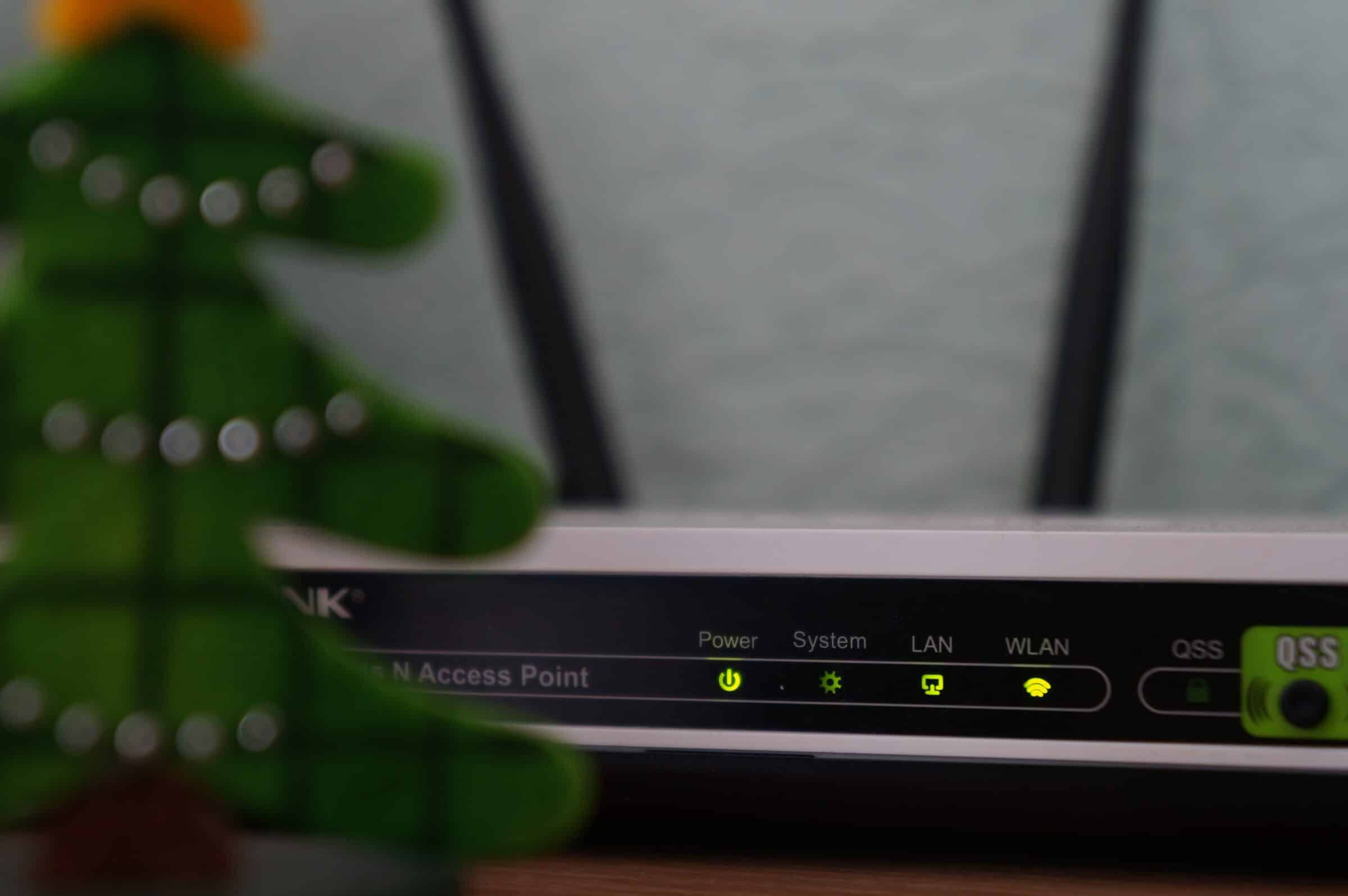Wi-Fi and cellular data are two essential components of our connected lives – enabling us to stay connected no matter where we are.
Whether we’re at work or at home, understanding the advantages and disadvantages of Wi-Fi vs cellular is critical so we can decide which option better meets our needs.
But what are the key differences between them and how do they fare in complex IoT deployments? Read this post to learn more.
What is Wi-Fi?
Wi-Fi is a wireless networking protocol that allows devices to connect to the internet and communicate without the need for physical wired connections.
The name ‘Wi-Fi’ is a trademarked phrase that stands for “wireless fidelity”, a riff off of ‘Hi-Fi’, the term used to describe high-quality audio equipment.
Utilising electromagnetic radio waves in set aside open frequencies, Wi-Fi allows the creation of a localised network in a specific geographical location – this is often referred to as a Wi-Fi network.
A Wi-Fi network is easily accessible and allows individuals and their devices to exchange data or connect to the internet, typically within a relatively short range such as within a home, office, or service environment.
The reach and speed of Wi-Fi networks can be influenced by multiple factors, including the specific protocol used, the number of devices connected, and the physical obstructions within the environment.
What is cellular data?
Cellular data is a form of government licensed wireless communication that leverages the extensive network of established mobile cell towers to provide communication and internet access.
These networks, operated by large mobile network providers, allow for voice, SMS, data, and internet connectivity over a wide geographical area, often extending far beyond the limited range of a typical, local Wi-Fi network.
The term ‘cellular’ is derived from the way these networks divide the region they cover into ‘cells’, each served by a base station. Within this grid of cells, a device connects to the base station with the strongest signal, and as you move, it seamlessly switches to another base station with a stronger signal via a process known as handover.
Devices are registered on a Home and Visitor Location Register, so that their cell is known for routing inbound calls and messages.
Cellular networks are particularly useful due to their ubiquitous and standardised natures. This means that devices can connect easily and over vast regional and international boundaries. It can also provide connectivity in remote areas where fixed broadband is difficult or impossible to implement.
Of course, this is provided there is a cell tower within radio range. Cellular radio and network technology works based on various evolutions of the GSMA technology standards, such as 2G, 3G, 4G, and 5G, with each offering varying characteristics and levels of speed, latency and general performance.
Cellular data comes at a subscription cost, with users typically purchasing data packages from mobile network operators, MVNO’s and resellers.
In the IoT space, the availability and connectivity of IoT devices rely on the roaming agreements between operators to enable devices to access any available network and to reconnect cross borders with expected communication and cost plans.
Difference between Wi-Fi and cellular data?
Although some devices are specifically designed for Wi-Fi or cellular data use only, many contemporary consumer devices offer the ability to utilise both. The most obvious example being mobile phones. Some devices such as televisions and computers, typically rely on Wi-Fi only.
With 4.97 billion active mobile internet users in 2022 and 92.3% of mobile phone owners worldwide having access to Wi-Fi, the choice between the two networks is a regular day-to-day issue for IoT users.
It is important to remember, however, that most IoT devices are designed for a particular or set of use cases that are more suited to one or the other. Producing devices that can flex to any connectivity standard increases costs and can be prohibitive or uncompetitive.
So, this begs the question – what are the key differences between Wi-Fi and cellular data and how do they affect choice in IoT scenarios and use cases? Keep reading to find out more.
Router
In the decision of cellular data vs Wi-Fi for IoT, a significant distinguishing factor to consider is the capabilities of the IoT device, the availability of power for the sensor or device and the ability to support the use of a shared or dedicated autonomous router.
When opting for Wi-Fi, a router needs to serve as the local hub of your network. Wirelessly connecting your device to the internet. It acts as a gateway, converting the data from your broadband connection into a wireless signal, which is then accessible by Wi-Fi-enabled devices within its range.
It is important to remember, however, that for devices to connect to a Wi-Fi network, it is likely they will need mains power and, of course. a Wi-Fi compliant hardware platform or facility.
By contrast, cellular data relies on networks of cell towers connected to core signalling and data networks, maintained by mobile network telecom companies, negating the need for a local network device such as a router to connect to the internet.
This difference, together with needed battery and device characteristics, plays a large role in the respective strengths and weaknesses of cellular and Wi-Fi. Influencing factors like hardware costs, power requirements, availability and security of shared network infrastructure, autonomous connectivity requirements, signal range, in-building attenuation, and data costs.
Range, bandwidth, and speed
The range and bandwidth of the varieties of cellular networks available and Wi-Fi are markedly different and often serve as deciding factors when considering the most suitable option for Internet of Things (IoT) deployments.
A Wi-Fi network, being localised and located inside a building, generally offers higher bandwidth and faster speeds within such a deployment.
However, the roll out of 5G will increasingly challenge this assumption, making it optimal for high-data-use environments such as homes, retail spaces, hospitality venues or offices. This is important where multiple IoT devices and even users need to connect simultaneously or on separate channels.
The range of Wi-Fi, however, is limited, extending only to the router’s limited reach.
Cellular network range, powered by a network of cell towers, offers broader and more ubiquitous coverage and the advantage of mobility, allowing devices to stay connected to the internet when on the move and without the need for router infrastructure.
Reliability
Reliability is another crucial aspect where Wi-Fi and cellular diverge significantly. The reliability of either technology will largely depend upon the hardware and type of network infrastructure implemented. Despite the importance of these fundamental issues, there are some other general characteristics that can affect connectivity.
For example, Wi-Fi, constrained by its limited range, can also be susceptible to interference from other Wi-Fi devices or networks in busy areas. This, together with the use of shared or third-party networks, can mean inconsistent connectivity.
Cellular networks tend to be more predictable. This is due to the extensive national infrastructure and the capacity for these networks to handle many simultaneous subscribers and connections.
Their reliability, however, can be compromised in areas with large metal indoor structures, which can be exacerbated in areas with weak signal strength. For critical connectivity, however, the use of routers needs to incorporate a robust and autonomous connectivity solution that enables effective, secure, and low-cost management.
For IoT applications that require uninterrupted connectivity and a broad range of use cases, this complexity can mean a sophisticated solution is required to enable both areas to be successfully covered. A good example of this is the need to connect payment terminals which may require a blend of IoT SIM cards and router solutions.
Where routers are needed, IoT SIM cards provide a robust and convenient means of providing and managing the uplink connectivity from these routers. This is due to their autonomous nature to the third-party site facilities and the ability to provide multiple connection paths.
Cost
Cost of device hardware with integrated Wi-Fi or cellular modems, routers and ongoing service subscriptions are another significant factor when choosing between Wi-Fi and cellular data, particularly in the context of IoT deployments.
If Wi-Fi is deployed in a home building or network, then this is simpler. This largely means that an IT department will procure hardware and manage the devices. For more dispersed deployments, this comes with fixed monthly costs for a broadband connection that provides internet access and wireless connectivity within a limited or confined area.
While it’s true that in principle multiple devices can connect to a single Wi-Fi network without additional costs, the capacity is limited by the bandwidth sourced and available (when using a fixed broadband connection) and the quality of this connection can degrade with an increasing number of devices.
The bigger problem is when IoT devices need to be deployed on third party sites. Many, if not most organisations do not wish for devices to connect to or use their secure networks.
Some good examples include CCTV cameras operated by third party security installers or companies, payment terminals or kiosks belonging to independent retailers on hospital premises or EV charge points installed on business premises.
The most prevalent solution to these problems is to provide connectivity through IoT SIM cards, IoT SIM card powered routers or a combination of both as primary and secondary connections.
Cellular data plans tend to be aggregated to enable large scale deployments. Understanding the type of data usage expected is therefore important. For example, simple telematics devices and payment terminals are well suited to multi-network SIM cards for resilience. A router powered by IoT SIM cards may need a much higher data plan. While multi-network IoT SIM cards provide the optimum solution, in extremely high data usage scenarios they can be more expensive. In these cases, two single network SIM cards located in a dual SIM router may be a more cost-effective solution.
Again, the capabilities and hardware requirements of the devices also play a significant role in the choice of connectivity solution.
Wi-Fi vs cellular: What is best for IoT?
While Wi-Fi and cellular could be intermittently switched between in a home environment for a consumer mobile phone, the choice between the two is more complex when applied to IoT device situations. This is because IoT deployments need to be scalable, centrally managed and take into consideration the often-limited functionality of IoT devices.
Having these functionalities is critical as most IoT devices tend to be deployed without local user configuration ability or user interfaces. Their connectivity solution, Beit IoT SIM cards or IoT routers therefore need to offer ubiquitous and reliable connectivity for their expected use cases and mode of operation.
Put simply, if IoT devices lose connectivity, they stop working and may require an expensive site visit to recover.
Whether you need seamless connectivity for card machines at restaurants or for heavy machinery within a factory, there are a few key points to consider when deciding between Wi-Fi and cellular for your IoT applications. After all, there isn’t a one-size-fits-all solution.
If you need an easy-to-use connection for a localised area, Wi-Fi could be the ideal option, however, it is important to note that the quality of connection and range may be compromised with multiple devices connected.
If connectivity is critical, then an autonomous solution may be needed. In these sorts of deployments, having a managed IoT router solution can be the best way to provide effective and secure remote management.
IoT SIM cards are integral to both cellular based IoT devices, but also to providing secure and reliable, autonomous connectivity for IoT routers. In many use cases such as CCTV and retail, a hybrid approach is needed to provide the requisite service.
The landscape is also beginning to change with the emergence of 5G networks. 5G is particularly attractive for its higher subscriber capacity, data rates and lower latency.
The successful use of this technology, however, requires a careful survey of 5G network deployments, network speeds available and technology maturity. 5G modems can be expensive and can be prohibitive for many applications. Networks also tend to be deployed in central urban areas or high usage spots.
The utilisation of 5G, however, does promise many use cases in IoT going forward, particularly in health and tourism. 5G in smart cities also has many potential use cases, including improved public transport, autonomous vehicles, and improved public safety.
5G and IoT as part of infrastructure programs and partnerships will over time means roads, buildings and public spaces can become smarter.
This can create a more integrated smart city concept which it is hoped will help improve the quality of life and the environment through enhanced services and better infrastructure.
What connection is best for the Internet of Things?
While use cases and applications of 5G will grow over time, it is currently not always the most practical solution for IoT devices.
For example, if ubiquitous national connectivity is needed for a fleet across remote locations, such as in telematics then 4G technologies remain the primary solution.
A more complex problem can be providing payments for a food truck at a festival. In these extreme usage environments, the signalling from user’s mobile phones can constrain the ability to connect. It is expected in time, as 5G deployments become more sophisticated that such networks will be capable of overcoming the maximum number of subscribers being breached. This will need deployments of 5G base stations around such sites as the range of fast 5G is relatively short owing to its higher radio frequencies.
5G deployments and standards also cater for the provision of Private LTE networks; secure, private wireless 5G networks hosted on dedicated hardware that provide connectivity in defined privately owned sites or buildings. In this sort of circumstance, a private LTE network could be used to ensure a reliable connection. It is important to remember, however, that the radio signals from these networks must not pass onto other privately owned sites or public land as this will create problems for licensed networks.
For very limited data bandwidth applications, NB-IoT, LoRaWAN and LTE-M are just three of the leading low power IoT networks available. Each having its own set of unique advantages and disadvantages which affect their suitability for certain types of IoT deployments.
Tailored connectivity solutions
While both Wi-Fi and cellular offer distinct advantages for home and work applications, the choice between the two for IoT deployments largely depends on the specific needs of the operation.
For many IoT operations, the power, hardware, and mobility of devices will dictate the choice. For some IoT applications such as security, CCTV, bodycams, retail and hospitality, a hybrid approach is often needed to provide coverage of all service zones.
Caburn understands these complexities and offers bespoke IoT SIM Card and IoT Router connectivity solutions tailored to your operations.
Whether it’s harnessing the power of LTE networks or futureproofing deployments, Caburn is at the forefront of connectivity technologies, ensuring seamless, secure, and efficient connectivity for your range of IoT needs.
At Caburn, we understand that each customer and IoT solution can be unique.
Learn more, therefore, about how you can utilise our IoT networks to streamline your business by contacting us today. We look forward to hearing from you.





